This week I took an art research trip to Los Angeles, so I have a short art narrative on boxing. "Ciencia Dulce/Sweet Science: An Artistic Perspective of San Antonio Boxing." Centro Cultural Aztlan. Organized by Jim Haught: Photos by Dr. Ricardo Romo.
Vic De La Fuente, “El Primero de San Anto.” Courtesy of Centro Cultural Aztlan. Photo by Ricardo Romo.
“Ciencia Dulce/Sweet Science: An Artistic Perspective of San Antonio Boxing," is a dynamic and immersive art show dedicated to exploring and celebrating the world of boxing, a sport that resonates deeply within the heart of San Antonio. Envisioned as a multidisciplinary exhibit, this show aims to capture the raw emotion, intense physicality, and poetic beauty of boxing through various art forms. Bringing together a diverse group of artists to participate, "Ciencia Dulce /Sweet Science" seeks to create a vibrant dialogue between the art and local boxing communities, fostering a deeper appreciation for both disciplines. Given San Antonio's rich boxing culture and the sport's unparalleled popularity in the city, this exhibit promises a unique and enriching experience that pays homage to the spirit and passion of San Antonio boxing in a unique way that is sure to have a positive and lasting impact on both art and boxing communities of San Antonio.” Joe Lopez.
Joe Lopez, “Zarzamora Street Gym.” Courtesy of Centro Cultural Aztlan. Photo by Ricardo Romo.
Richard D. Menchaca: I am seventy-one years old and I have been drawing and painting since I was a small child. My father, who was an artist seeing my keen interest in drawing, took me under his wing. At the time I didn't realize how fortunate I was, I had my own personal art teacher. He taught me the basics and how to use various media; pencil, pen and ink, watercolors, acrylics, the fundamentals of anatomy, design, light and shadow plus perspective.
In the past couple of years as a result of my job as an illustrator, graphic designer, and artist I have switched from using physical media to digital or electronic art. Unlike traditional art, digital art makes use of electronic devices and computer codes. Digital artists use specialty tablets and graphic software to create their works whereas traditional artists use pencils, canvas, or written words. I use Procreate with an Ipad and Adobephotoshop to create my art. Many people often mistake digital art as Al (Artificial Intelligence). This is far from the truth. Just like physical art, digital art takes just as much time, practice, and skill to master. Because of my profession I have to be proficient in both.
When I start a painting I usually create my thumbnails on paper. Once done I scan them and import the sketches into my IPad (Procreate) or into Photoshop. In the tablet or computer I finalize the drawing and start laying down the paint (pixels). This step is as if I was actually painting on paper, artboard or canvas. Menchaca. SA
Richard D. Menchaca, “El Gallo Negro.” Courtesy of Centro Cultural Aztlan. Photo by Ricardo Romo.
Martin Emmanuel Rangel, “Roberto Cruz vs. Daniel da Beast.” Courtesy of Centro Cultural Aztlan. Photo by Ricardo Romo.
Angelica Gomez Mayorga, “Hechale Mija.” Courtesy of Centro Cultural Aztlan. Photo by Ricardo Romo.
Cris Escobar, “Recuerdo Los Top Rank Boxers.” Courtesy of Centro Cultural Aztlan. Photo by Ricardo Romo.
Escobar’s paintings, which capture the borderland experience past and present, are rich in narrative and color. An artist, educator, and community activist, Escobar draws and paints in his words, “What I have lived and experienced in my life.”
The path to U.S. residency for Cris Escobar’s parents, Ramon and Maria Ascencion, began in the late 1930s. As a teenage vaquero in Coahuila, Mexico, Ramon Escobar looked north to the United States for better opportunities. He left Mexico at age 14 to work as a cowboy in South Dakota. The large ranches and farms in the upper West and Midwest recruited their best ranch and bracero [seasonal contract] farm workers from Central Mexico. Many seasonal workers returned to Mexico after the work was done although others stayed in the United States. Escobar was determined to find steady work so that he and his family could remain permanently in the U.S.
Artist Cris Escobar in Del Rio, Texas. Photo courtesy of the artist.
Ramon Escobar later worked on another large ranch in Montana. A trusted worker, he was tasked to recruit additional vaqueros from his home state. He also brought his wife to the U.S. Ranch work was seasonal and the Escobar family worked in different midwestern states picking crops in the spring and summer. As a result of constant movement to migrant labor camps, Cris Escobar was born in Utah in 1958.
The Escobar family settled in Del Rio when Cris’s father found work in the building of the Amistad Dam. Construction work existed year-round, and Cris attended school in Del Rio where his teachers, as early as second grade, took notice of his artistic talents and gave him art assignments.
After graduating from Del Rio High School, Cris Escobar attended St. Edward’s University in Austin on a Migrant Education scholarship. He completed an art degree at the University of Texas, El Paso but returned to Del Rio in 1983 after completing his studies at UTEP.
While attending St. Edward’s University, Escobar met Raul Valdez and Fidencio Duran, two muralists who influenced Escobar’s artistic development. Valdez moved to Del Rio to complete a series of murals in 1977-1978, and Escobar connected with him and began learning about muralism. In 1985, The Texas Commission of the Arts selected Duran and Escobar to paint several murals in Brownsville, Texas. For his commission, Escobar painted murals over ten months for the Brownsville School District.
In the late 1980s, Escobar began a teaching career in Del Rio, a vocation that extended to 2022. He moved to Pleasanton, Texas in 2023 to be close to his daughter and lives part of the year in Pleasanton and part in Del Rio. At the end of the school year on May 24, 2024, Escobar retired from teaching and now looks forward to painting full-time.
Escobar completed a giant 20x120 foot mural on a building on South Main Street in downtown Del Rio that honors different fields of professional sports figures– including the famed Mexican-American golf team from the San Felipe barrio that won a state championship in the 1950s. A movie based on this sports story, “The Long Game,” recently premiered nationally and was well-received.
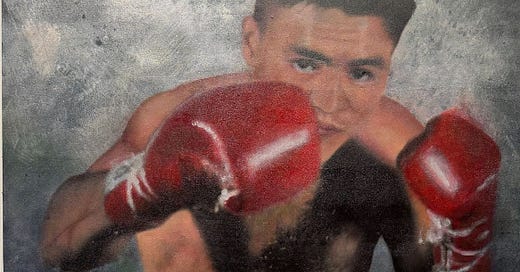



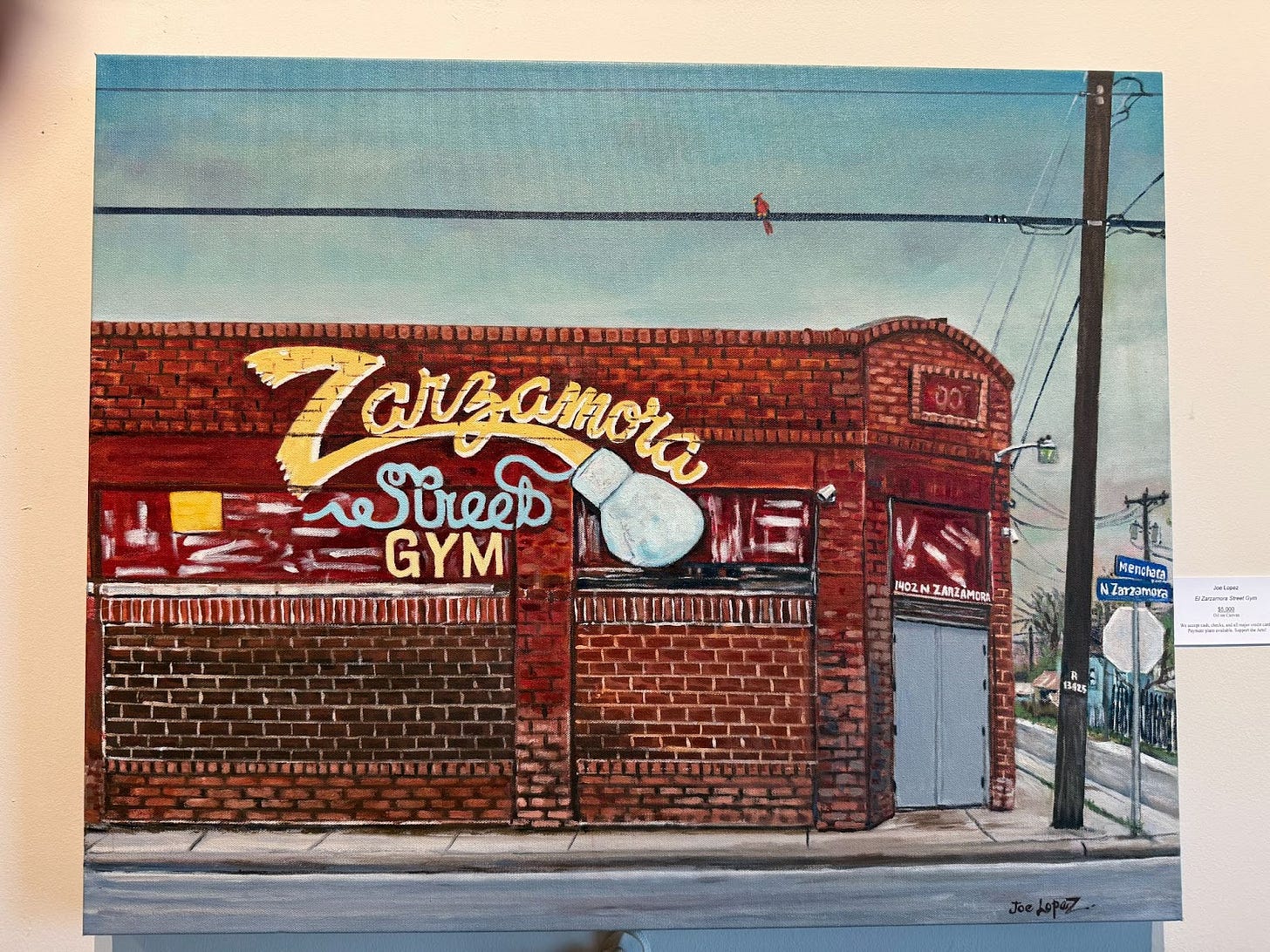
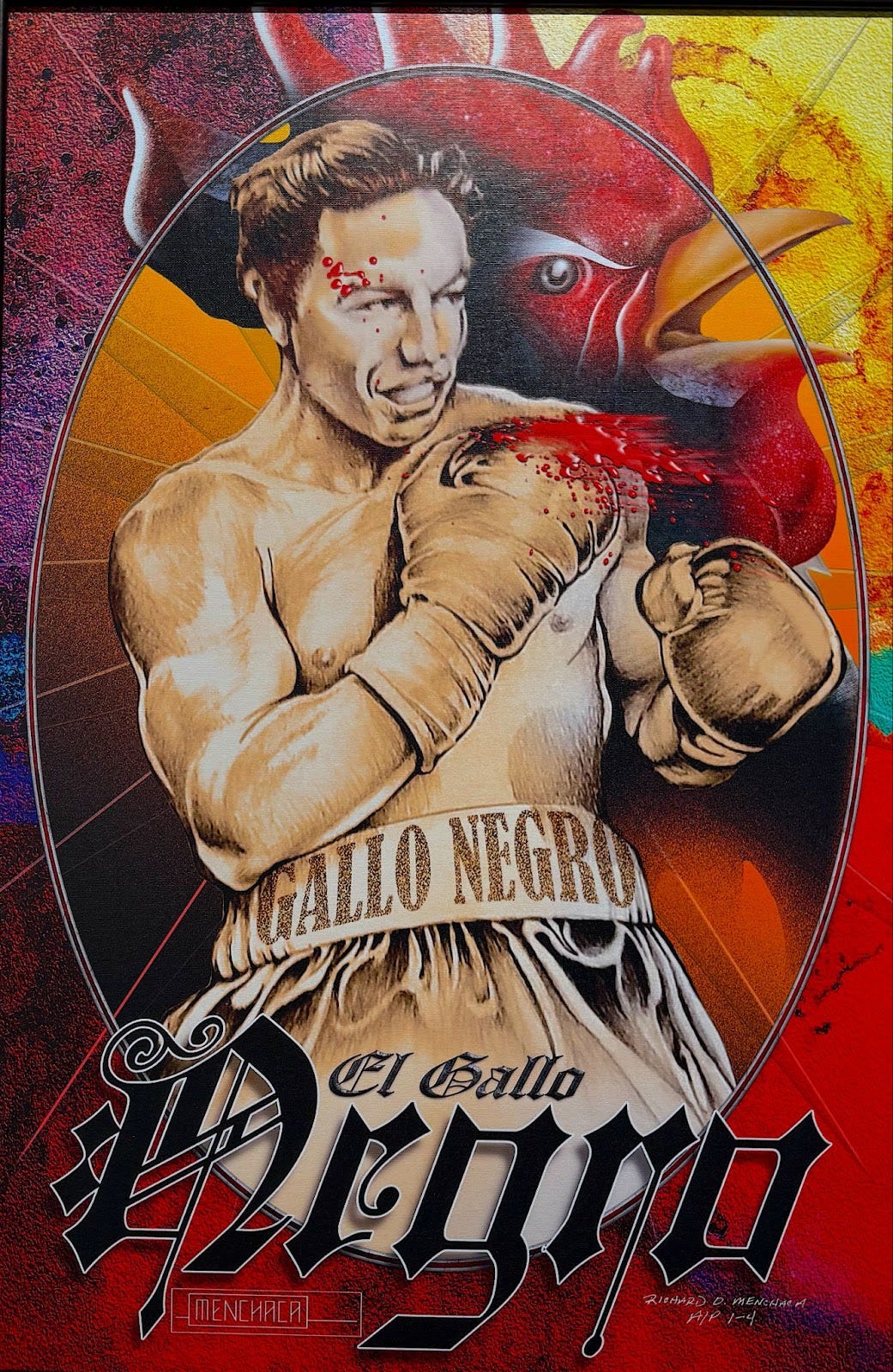
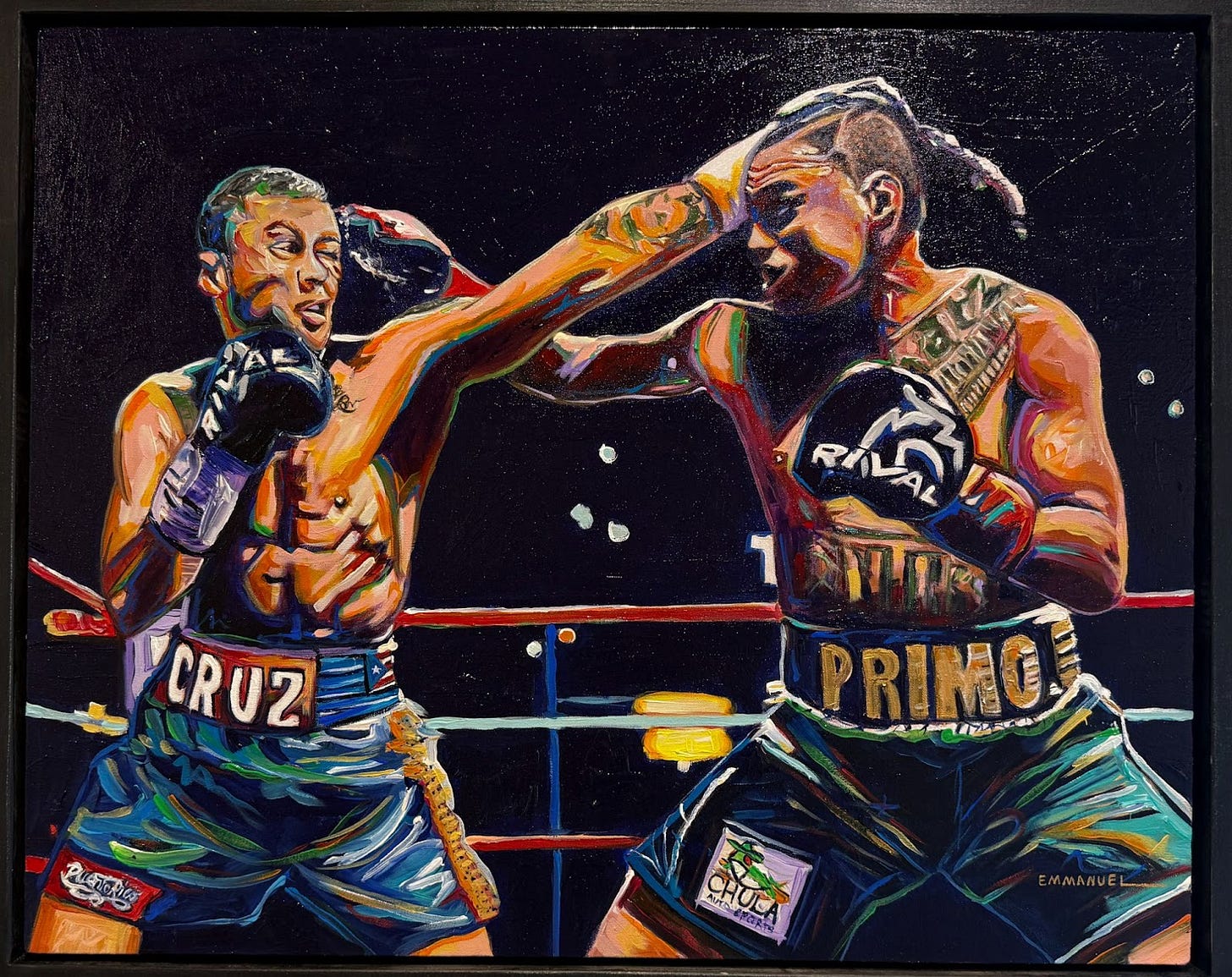
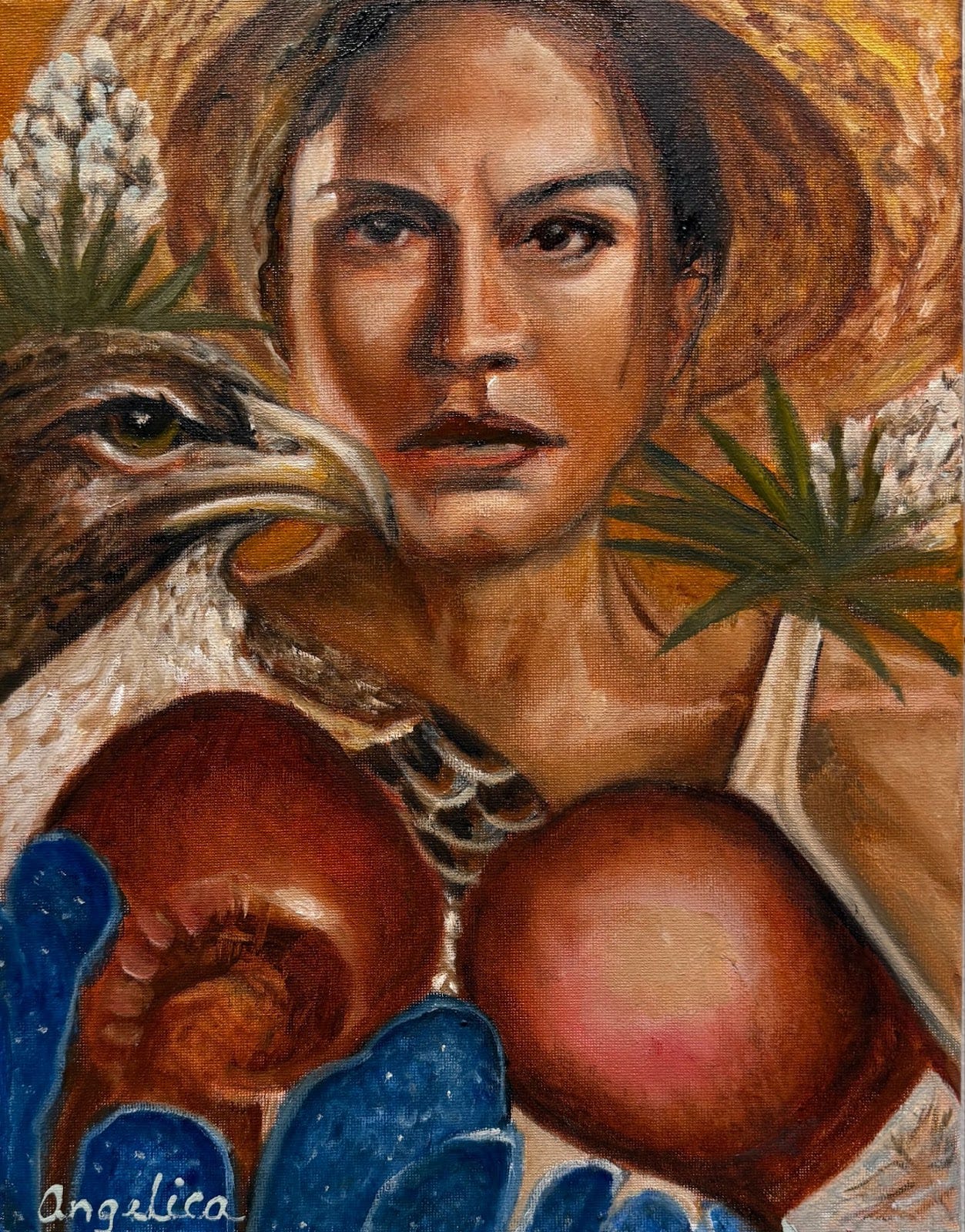
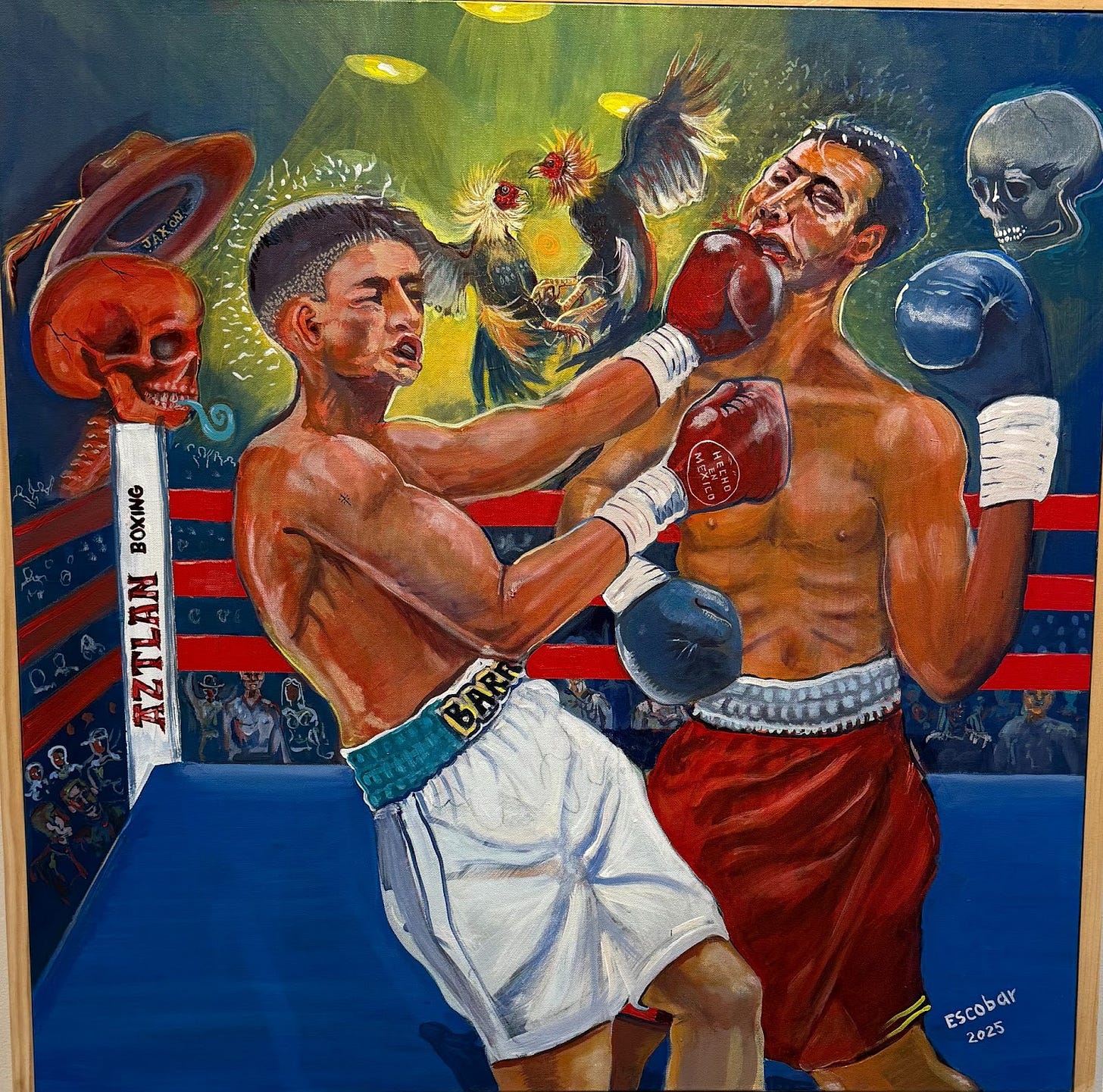
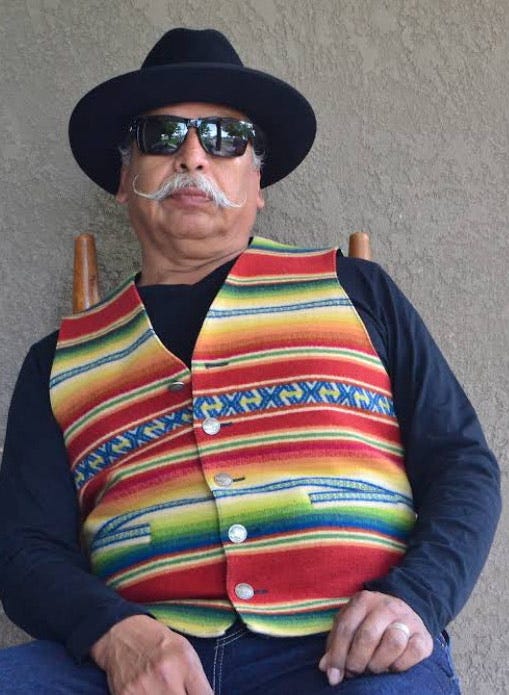
Ricardo, let me know at bnericci@sdsu.edu if you would like SDSU Press to send you Oliver Mayer's HURT BUSINESS ... his Blade to the Heat is a Chicano boxing epic for the ages! Abrazos, Memo Nericcio
https://hype.sdsu.edu/mayer/